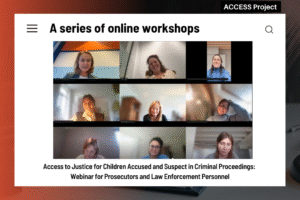Procedural Posture
The Attorney General applied on behalf of the Registrar of Marriages to the High Court. Vivienne Ullrich argued as a friend of the court in opposition to the Attorney General. The Attorney General stated that the State’s only interest was to have the matter settled, regardless of outcome.
Issue
The Attorney General requested that the Court decide if New Zealand marriage law allowed two people to marry if their birth genders were the same but if one of their genders was subsequently changed through surgery and hormone treatments.
Domestic Law
M v. M, Family Court at Otahuhu, New Zealand, 1991 (holding that post-operative transgender individuals are, for the purposes of marriage, recognised as their reassigned gender).
Comparative Law
Hyde v. Hyde and Woodmansee, Courts of Probate and Divorce, United Kingdom, 1866 (defining common law marriage as the voluntary union for life of one man and one woman, to the exclusion of all others).
MT v. JT, Superior Court of New Jersey, Appellate Division, United States, 1976 (rejecting Corbett and finding dispositive the sex of an individual on the day of marriage and not at birth).
Reasoning of the Court
The Court held that New Zealand law clearly limited marriage to opposite-sex couples. The main issue, therefore, was the definition of man and woman for the purposes of marriage. The Court recognised that scientific inquiry complicated the issue. Chromosomal patterns and the appearance of genitalia were unreliable indicators of gender. The Court reasoned that while the traditional function of marriage was procreation and sexual intercourse, New Zealand now recognised that the psychological and social aspects of marriage are the most important aspects of the institution. Therefore, the Court concluded that because society allows sex reassignment, society must allow transgender people to function as fully as possible in their reassigned genders. This included allowing transgendered individuals to marry persons of the opposite gender to their reassigned gender. In support of this proposition, the Court cited the New Zealand case M v. M and United States case MT v. JT.
Furthermore, following surgery, an individual could no longer function as the sex he or she had before the operation. A transgender woman could not have sex as a man or procreate. The Court stated that there was: “no social advantage in the law not recognising the validity of the marriage of a transsexual in the sex of reassignment. It would merely confirm the factual reality.” In fact, limiting transgender persons’ possible marriage partners to people who were the opposite of their birth sex would, in effect, legalise same-sex marriages. The Court rejected the notion that permitting transgender people to marry would harm children.
In holding that a transgender person could marry someone of the opposite sex to their reassigned sex, the Court emphasised: “Where two persons present themselves as having the apparent genitals of a man and a woman, they should not have to establish that each can function sexually”. Some conformity with the physical characteristics of the desired gender was sufficient. “I therefore make a declaration that for the purposes of s23 of the Marriage Act 1955 where a person has undergone surgical and medical procedures that have effectively given that person the physical conformation of a person of a specified sex, there is no lawful impediment to that person marrying as a person of that sex”.
New Zealand Attorney General v. Family Court at Otahuhu, High Court of New Zealand (full text of judgment, PDF)


